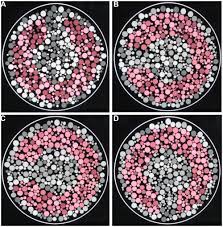Cambridge color test

Try more color vision test
What is Cambridge color test
This examination is quite similar to the Ishihara Test, with the exception that you see a computer screen. You will look for a "C" shape that is a distinct color from the background. It appears at random. When it appears, press one of the four keys on the screen.
This test allows the researcher to quantify the progression or remission of the disease over time. Many drug addicts have color vision impairments. The pharmacologist will be able to use the test to keep an eye on the short-term and long-term bad effects of blindness.
Examining chromatic sensitivity along the color confusion lines, the test determines discrimination ellipses in color-deficient individuals. People with even the slightest color vision problem tend to see generated ellipses oriented and bigger.
How to perform the Cambridge Test
The Cambridge test is simple to perform for both colorblind and non-blind individuals. On a background that doesn't have any color, this test uses a familiar Landolt C stimulus, which is defined by the two test colors that need to be distinguished.
The target's first use of vibrant, bold colors helps establish the test-taker's dependability in identifying the direction of the C-shape shown. Then, based on the user's performance, the computer modifies the color quality (chromacity) between the target and the backdrop. This test comes in both longer and shorter iterations.
For those with low vision, there is another variation of the Cambridge test with four plates, but these plates only have one color and no dots or targets. One of the plates is a distinct color, and the other three are neutral, grayish hues. The test-taker must recognize the circle with the specified color.

Features
The Cambridge Color Test employs plates with colored dots, similar to the Ishihara test, but uses a C-shape in a different color from the background, combining the ideas of the Ishihara test with modern technology. The test-taker must click on one of four keys to indicate the orientation of the C-shape, or "target," which appears arbitrarily in one of four orientations.
Result
The test consists of 12 trials. The number of correct trials shows how well your optical performance responds to the color in a certain amount of time (3 seconds). The result is represented in the below table:
| Correct trials | Percentage accuracy (%) | Rating scale |
| 10-12 | 90-100 | Good |
| 7-9 | 70-90 | Normal |
| 4-6 | 40-60 | Quite Bad |
| 0-3 | 0-30 | Bad |








